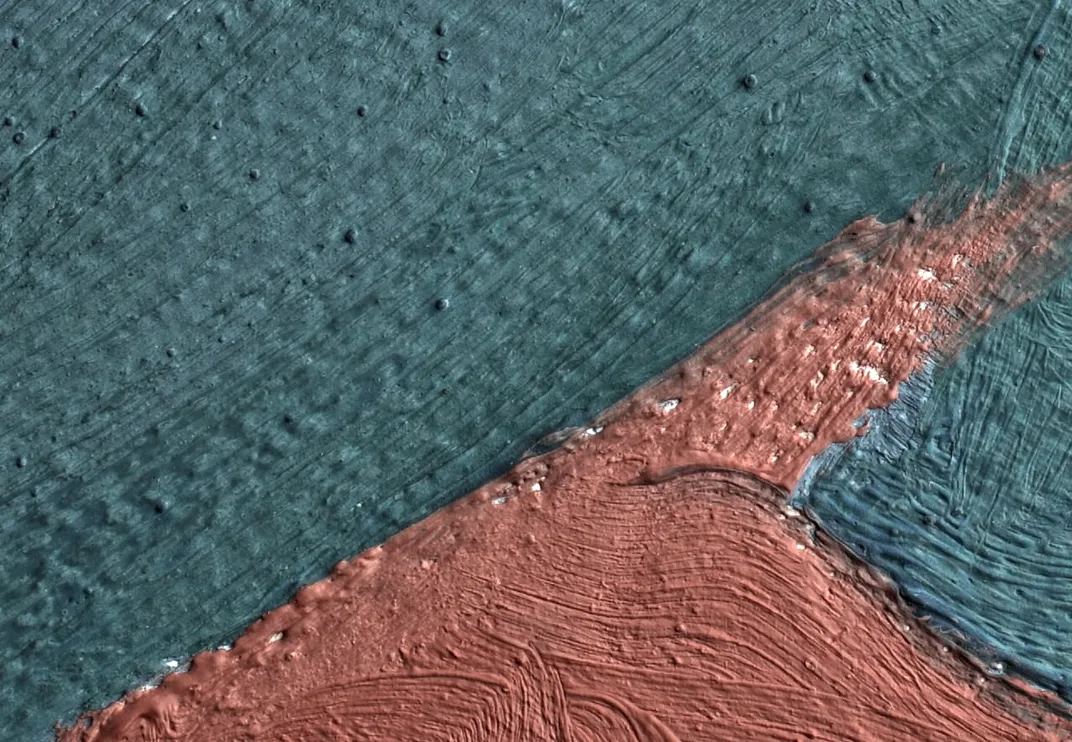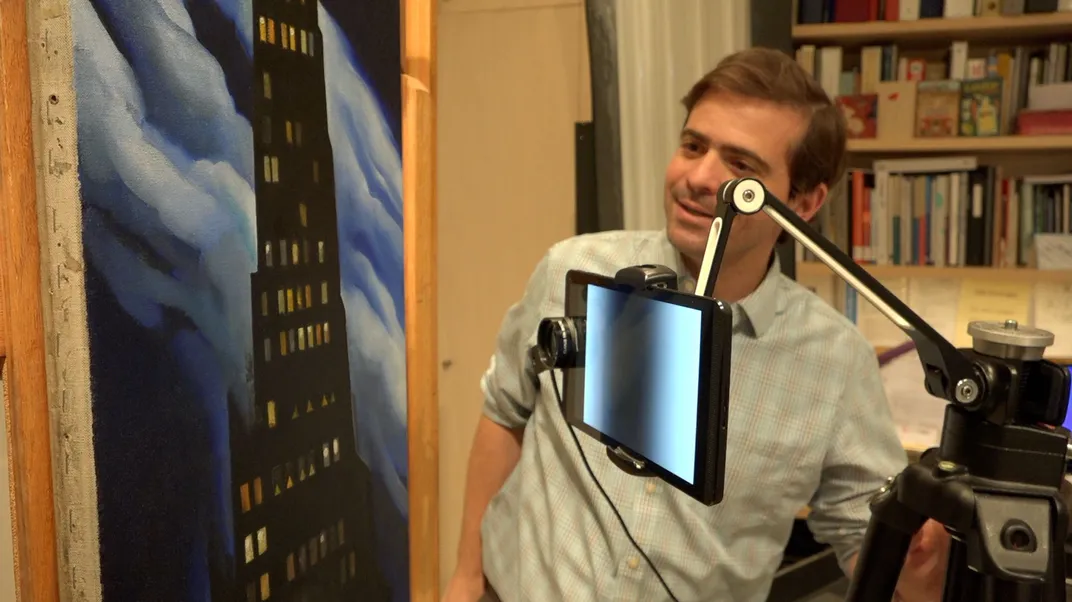Why Are Georgia O’Keeffe’s Paintings Breaking Out in Pimples?
A new handheld tool lets scientists diagnose the chemical reaction behind “art acne”—and learn how it can be prevented
:focal(1000x809:1001x810)/https://tf-cmsv2-smithsonianmag-media.s3.amazonaws.com/filer/bb/4c/bb4cca9d-ae79-4541-9a3f-4a01f51c9a42/gettyimages-3061422.jpg)
Sweeping desert vistas and vibrant cattle skulls, yonic flower petals and lush, leafy branches—Georgia O’Keeffe’s distinctive visual lexicon and abstractions of the natural world made her one of the 20th century’s most influential artists. Some of her most stunning and recognizable work was created after she settled in New Mexico and channeled the Southwest’s colors and landscapes into her work. But after the paint had dried, O’Keeffe noticed something odd about some of her masterworks created in the 1940s and '50s: The surfaces of the paintings were marred by tiny bumps.
At first, O’Keeffe assumed these little bumps might be grains of sand—some leftover residue from her desert muse. But as time went on, more and more bumps began to appear, and paint started to flake off. O'Keeffe notified a conservator friend, Caroline Keck, and art conservationists began to worry that something more destructive might be boiling beneath the surface. Why was O’Keeffe’s work breaking out in pimples?
Georgia O’Keeffe Museum Head of Conservation Dale Kronkright examined and sampled the bumps—roughly 200 microns across—and identified them as metal carboxylate soaps. These compounds form when fatty acids from the binding agents in the paint react with the lead and zinc in the pigment.

Turns out, this “art acne” is part of a wider problem in art conservation. The work of many artists shows signs of breakouts, from Vincent van Gogh to Piet Mondrian and Marc Chagall. “These are happening on works of art throughout the generations—since oil paint was created,” says Amber Kerr, Chief of Conservation at the Lunder Conservation Center at the Smithsonian American Art Museum. Environmental factors like temperature and relative humidity contribute to their formation, but mostly, Kerr says, “it’s a phenomenon that happens because of the medium … it’s sort of an inherent aging process.”
Metal soaps were first spotted on Rembrandt paintings in 1996. Since then, researchers have estimated that as many as 70 percent of all paintings in museum collections around the world are affected by this kind of damage. In the same way sweat and sunscreen can combine to cause a breakout, this chemical reaction results in tiny bumps that lift up the surface of a painting.
“These surface protrusions can erupt. They can spall off the paint. They can cause deterioration of the painted material,” says Marc Walton, a research professor of materials science and engineering at Northwestern University. Conservators are racing to figure out how the soaps form and spread, and until now, they’ve relied on bulky, expensive and time-consuming equipment.
But Walton’s team might have found a silver bullet—and you might have one in your pocket right now.
At a press briefing at the American Association for the Advancement of Science’s 2019 meeting, the researchers gave the first demonstration of an app that can run on a regular tablet or smartphone using the light source of the device—the LED flash or the LCD screen itself—reflected off the surface of the painting to measure the protrusions. The image data is processed to remove color and extract three-dimensional surface information to spot any deviations, creating a kind of topographic map of the paintings.
“Color camouflages the underlying shape,” Walton says, so “just by doing that one act we can start to get a better sense of where the problems are and how they’re changing over time.”

With this new tool, a process that took days to complete can now be done in a matter of minutes. To study metal soaps in art, the Lunder Conservation Center uses a Hirox 3D microscope that can take nanometer-scale measurements. But smaller museums like the Georgia O’Keeffe Museum don’t have access to such expensive equipment—and many institutions might not even have a conservator on staff at all. The new app technology could be most helpful in these situations, Kerr says. The easier, more accessible and less expensive the measuring process, the more data researchers will have to work with to figure out the best ways to prevent deterioration.
The app is in its beta version now, being tested on other collections, and the researchers plan to release it for free to the public in a year. Their goal is to put this technology into the pockets of art conservators around the world. Fellow Northwestern researcher Oliver Cossairt compares the paint-scanning technology to the Star Trek tricorder, a hand-held device used for everything from diagnosing crewmember health to detecting the geochemistry of a new planet. “That’s the tool we’re trying to make,” Cossairt says. “The Swiss Army Knife of measurement tools.”
Ultimately, better measurements mean a better baseline for conservators to design proper care and environmental conditions, from storage to travel containers, that will help artwork beat the breakouts. According to Kronkright, the new technology isn’t a replacement for high-powered equipment like the Hirox microscope, but rather a way to help conservators manage their time. In the same way a general practitioner might spot a mole and send a patient to a specialist, this easy tool can help conservators know when to look closer.
“We’re art doctors, if you will—or in this case, art dermatologists,” Kerr says. “We see what’s going on, and it’s cuing us that we need to look at the surface a little deeper to understand how these materials are changing, what’s causing them to change, and what we need to do to mitigate that change.”
Studying artwork this closely can solve chemical mysteries, but it also emphasizes human connections. “You start to see the artist more intimately,” Walton says. “You get into the act of creation, why she made certain decisions—and how that work of art came to be.”
Sometimes, looking closely can help us see the big picture.